Almond Tree Grow & Care Instructions
Written by Iris
Nov 22 2021
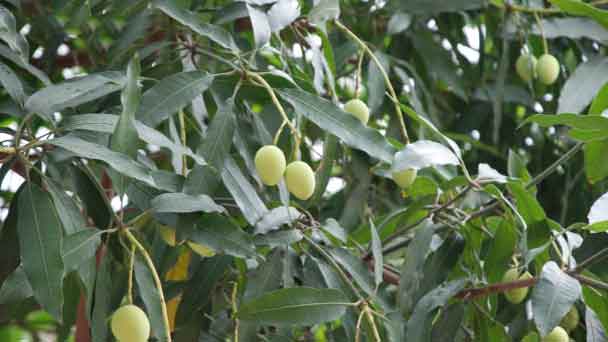
Once established, Almond tree is a productive nut tree with a lovely natural round frame and deciduous leaves. For viewing and eating, Almond trees are wonderful trees for gardens of all sizes, blossoming white cherry blossoms in late winter and early spring, while felt nut shells adorn the tree like ornaments until early fall, when they crack open to reveal nuts, hidden within secondary shells.
Read More:
Where Do Almond Trees Grow
Potted trees are best grown during the dormant winter period. Yet, it's smart to time the planting well, since the tree doesn't tolerate frost.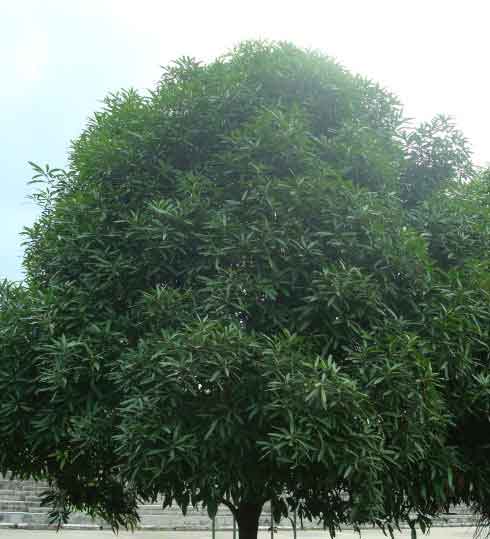
The first thing to do is search for natural fresh harvested almonds. In all cases, we need to find seeds that have not been processed in any way. They must be untreated, unroasted, unheated, and unsalted seeds. It is better to find newly harvested shelled almonds.
Once we find the natural Almond tree seeds, we have to select at least 10 of them. All things done correctly, only 50% of the seeds or less will germinate, and only a fraction of those will make it to a small seedling and young tree. First, soak the shelled almonds in water for 48-72 hours. Then, we break carefully the shell and we collect the seeds. Then, place them upon a wet towel and put the towel in a plastic bag.
They key from now on is to place the bag at the refrigerator for 3-4 weeks. About 3 weeks later, some seeds will have normally sprouted. Plant them in individual small pots containing special soil mix (soil with river sand and compost etc.). Plant the almond tree seeds superficially, at a depth of 1,2 inches (3 cm) and cover lightly with soil. Then, place the pots at a room temperature, close to a wide window, so that the seedlings will have access to plenty of sunlight. The most important thing from now on is to keep the pots moist but not soggy. When the seedlings have reached a height of 6 inches (15 cm), transplant them at a bigger container.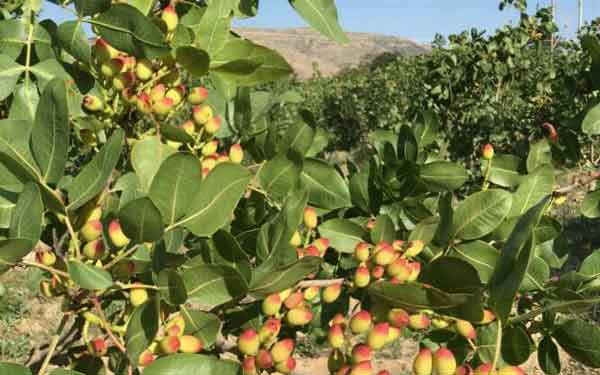
An almond tree to take a bud from
A healthy rootstock (preferably a peach tree or bitter almond)
A sharp, clean knife
Grafting tape
Begin with selecting a healthy bud from the almond tree. Using your knife, carefully slice the bud off of the branch about an inch above and below. Cut through the bark and just the outer surface of the trunk. Set aside the bud for now.
Move over to the rootstock. Peach trees work really well for almond grafts, but you could also choose a different, hardier variety of almond. On the rootstock, find a healthy spot and make a vertical cut that’s slightly longer than your bud cutting. Cut through the bark, but not the wood underneath. On top of that cut, make a horizontal one forming a T shape. You’ll now be able to gently peel back the bark flaps made by that perpendicular cut.
Grab your Almond tree bud cutting and carefully slide it under the bark on the rootstock. It should fit in like a nice little pocket. Using grafting tape, secure the bud in place. All that's left to do now is wait for the bud to fuse with the rootstock. Once this is complete, remove the tape if it hasn't already degraded.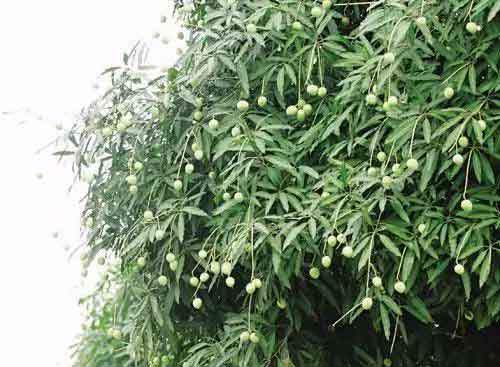
For the absolute best results, choose a soil that’s sandy or loamy, fertile, and has a pH around 6.5. Almond trees are very vulnerable to soil-based diseases like verticillium wilt. For container plants, always use new, store-bought soil. If you suspect disease in your garden’s soil, perform a soil pathogen test to determine what needs to be done. These are often provided by university agriculture departments.
Almond trees grow best in zones 7 through 9. In the U.S., that includes Southeastern states, Texas, the Southwest, and the coastlines of Washington, Oregon, California to the west and all the way up the coast to Massachusetts in the east.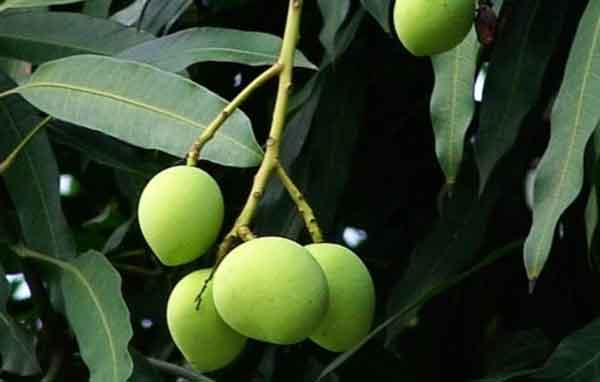
A good rule of thumb is to apply one ounce of granular or slow-release fertilizer per year the tree has been growing, leveling out to the manufacturer’s recommended amount once it’s mature. Begin fertilizing in the early spring and every 4-6 weeks until harvest. Optionally, give a final dose after harvest before the leaves drop. This will give the tree a headstart on blooming the next year.
For baby trees, don’t apply any until the spring after they’ve been planted. For that first fertilization, give them less than one ounce just to be safe. Fertilizing in regular small amounts like this drastically lessens the chance of nitrogen burns. Ideally, the fertilizer you use should be high in nitrogen and phosphorus. However, a balanced one works fine as well.
Pruning
For an Almond tree to grow vigorously, robust pruning is required. Shorten the shoots to 3.93 to 3.14 inches immediately after flowering each year. Thin branches are completely removed. Positive side effect: This also prevents brown rot. Old crowns are rejuvenated by a heavy pruning.
When diseases are ignored, they can spread themselves and kill the tree within days.
There are a number of diseases that catch the trees – and almond trees are not safe from them.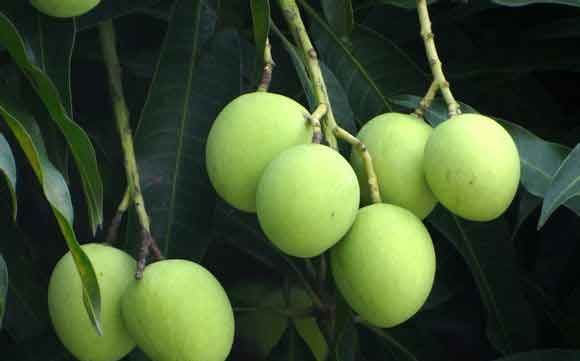
Prunus dulcis is the ‘mother ship’ and unlike many cultivars it is fairly drought-tolerant. Its fruit is ready for harvest around September. Though it can be grown in British home gardens, better options are available.
Prunus dulcis ‘Macrocarpa’ is a good choice for British gardens. It is early to blossom in early spring, producing pale pink and white flowers, and also produces an early harvest in August. The almond is quite sweet.
‘Ingrid’ is a popular cultivar that is gaining ground in England because of its lovely pink blossoms in spring and the rich buttery taste of the almond. Be warned that it is very hard-shelled; on the other hand, this is a self-pollinating variety.
‘Robijn’ is another top choice. For one thing this one is soft-shelled and for another the almond has a remarkably sweet flavour. Its blossoms are especially delightful. This too is a self-pollinating variety.
‘Princess’ rounds up the European self-pollinating varieties. One can consider this a ‘connoisseur almond’ for the amateur gardener because the shells are soft and the almond is unusually sweet and scented, ready to eat off the tree.
‘All-In-One’ is an American self-pollinating variety that grows to only about 4 metres. The fruit is both soft-shelled and sweet. It blossoms late and correspondingly yields a late harvest from the end of September to early October.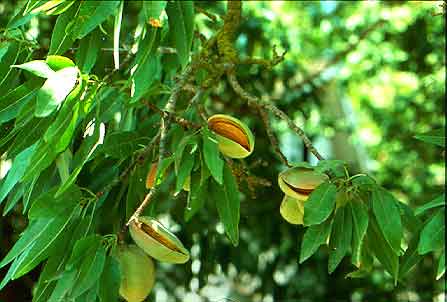
Where to Grow Almond TreeWhen to Grow Almond TreeHow to Propagate Almond TreeGrow Almond Tree from SeedsGrow Almond Tree from BuddingHow to Care for Almond TreeAlmond Tree Lighting RequirementsAlmond Tree Soil CareAlmond Tree WateringAlmond Tree Temperature & HumidityAlmond Tree FertilizerAlmond Tree Pests & DiseasesVarieties of Almond TreeAlmond Tree Care FAQHow Big Do Almond Trees Get?How Long Does It Take For An Almond Tree To Bear Fruit?
Where to Grow Almond Tree
To admire the romantic early bloom extensively, it is best to plant an Almond tree within the eyeshot of the house. As a small stand-alone tree, it enhances every front yard. It also enhances a flower bed if planted along with onion flowers and perennials. The tree grows well even in a 40 liter container on the terrace - if it is watered regularly. In addition, the cut branches of the almond tree look excellent in vases. A popular custom is to cut them at the beginning of December as barbara branches.Read More:
Where Do Almond Trees Grow
When to Grow Almond Tree
Any time of year is good for planting your almond trees. However, if you're planting bare-rooted saplings, it's recommended you plant them in late autumn or early spring.Potted trees are best grown during the dormant winter period. Yet, it's smart to time the planting well, since the tree doesn't tolerate frost.

How to Propagate Almond Tree
Grow Almond Tree from Seeds
As it happens in many fruit trees (citrus, apple, nuts etc.) an almond tree grown from seed may not bear fruits for the whole of its lifetime for various reasons. Besides, in order to harvest almonds, we have to plant at the same yard at least two different and compatible fruit bearing varieties, so that the pollen can travel (through honeybees) from one tree to another.The first thing to do is search for natural fresh harvested almonds. In all cases, we need to find seeds that have not been processed in any way. They must be untreated, unroasted, unheated, and unsalted seeds. It is better to find newly harvested shelled almonds.
Once we find the natural Almond tree seeds, we have to select at least 10 of them. All things done correctly, only 50% of the seeds or less will germinate, and only a fraction of those will make it to a small seedling and young tree. First, soak the shelled almonds in water for 48-72 hours. Then, we break carefully the shell and we collect the seeds. Then, place them upon a wet towel and put the towel in a plastic bag.
They key from now on is to place the bag at the refrigerator for 3-4 weeks. About 3 weeks later, some seeds will have normally sprouted. Plant them in individual small pots containing special soil mix (soil with river sand and compost etc.). Plant the almond tree seeds superficially, at a depth of 1,2 inches (3 cm) and cover lightly with soil. Then, place the pots at a room temperature, close to a wide window, so that the seedlings will have access to plenty of sunlight. The most important thing from now on is to keep the pots moist but not soggy. When the seedlings have reached a height of 6 inches (15 cm), transplant them at a bigger container.

Grow Almond Tree from Budding
To keep it true to type and increase durability, almond trees are often propagated by budding. This is a simple method of grafting that’s easy to do yourself. To start, you'll need the following:An almond tree to take a bud from
A healthy rootstock (preferably a peach tree or bitter almond)
A sharp, clean knife
Grafting tape
Begin with selecting a healthy bud from the almond tree. Using your knife, carefully slice the bud off of the branch about an inch above and below. Cut through the bark and just the outer surface of the trunk. Set aside the bud for now.
Move over to the rootstock. Peach trees work really well for almond grafts, but you could also choose a different, hardier variety of almond. On the rootstock, find a healthy spot and make a vertical cut that’s slightly longer than your bud cutting. Cut through the bark, but not the wood underneath. On top of that cut, make a horizontal one forming a T shape. You’ll now be able to gently peel back the bark flaps made by that perpendicular cut.
Grab your Almond tree bud cutting and carefully slide it under the bark on the rootstock. It should fit in like a nice little pocket. Using grafting tape, secure the bud in place. All that's left to do now is wait for the bud to fuse with the rootstock. Once this is complete, remove the tape if it hasn't already degraded.

How to Care for Almond Tree
Almond Tree Lighting Requirements
Almond trees prefer full sun, requiring at least six hours of direct sunlight per day. If your tree absorbs more sun, you will get better blooms. If the sun is especially hot where you live, paint the south-facing side of the trunk with white latex paint to prevent sun-scorching.Almond Tree Soil Care
Almond trees may be picky with sun and water, but they’re actually very tolerant of different soils. The only major requirement here is that the soil is well-draining. If it stores too much moisture, the roots can drown and rot. If needed, boost your soil’s drainage with sand or organic matter.For the absolute best results, choose a soil that’s sandy or loamy, fertile, and has a pH around 6.5. Almond trees are very vulnerable to soil-based diseases like verticillium wilt. For container plants, always use new, store-bought soil. If you suspect disease in your garden’s soil, perform a soil pathogen test to determine what needs to be done. These are often provided by university agriculture departments.
Almond Tree Watering
Almond trees require a significant amount of water every year. You should expect to flood the tree with water once per week, especially in the first year. After that step, you should be flooding the tree at least once every two weeks regardless of the amount of rain or drought.Almond Tree Temperature & Humidity
Like the Mediterranean, the best climates for almond trees have warm, dry summers and mild but wet winters. In fact, the ideal temperature is between 59 and 86 degrees Fahrenheit.Almond trees grow best in zones 7 through 9. In the U.S., that includes Southeastern states, Texas, the Southwest, and the coastlines of Washington, Oregon, California to the west and all the way up the coast to Massachusetts in the east.

Almond Tree Fertilizer
The fertilizing schedule for almond trees is sure to keep you on your toes. These plants need lots of nitrogen in order to grow and produce fully. However, too much nitrogen can cause damage to the trunk and leaves. In order to find the right balance, you’ll need a good fertilizing schedule.A good rule of thumb is to apply one ounce of granular or slow-release fertilizer per year the tree has been growing, leveling out to the manufacturer’s recommended amount once it’s mature. Begin fertilizing in the early spring and every 4-6 weeks until harvest. Optionally, give a final dose after harvest before the leaves drop. This will give the tree a headstart on blooming the next year.
For baby trees, don’t apply any until the spring after they’ve been planted. For that first fertilization, give them less than one ounce just to be safe. Fertilizing in regular small amounts like this drastically lessens the chance of nitrogen burns. Ideally, the fertilizer you use should be high in nitrogen and phosphorus. However, a balanced one works fine as well.
Pruning
For an Almond tree to grow vigorously, robust pruning is required. Shorten the shoots to 3.93 to 3.14 inches immediately after flowering each year. Thin branches are completely removed. Positive side effect: This also prevents brown rot. Old crowns are rejuvenated by a heavy pruning.
Almond Tree Pests & Diseases
Fruit or nuts are nature’s blessing. One hint of anything being organic is that it can die easily. Similarly, if you are planting almonds, which are already very sensitive, you have to keep a close eye on its health.When diseases are ignored, they can spread themselves and kill the tree within days.
There are a number of diseases that catch the trees – and almond trees are not safe from them.
- Verticillium Wilt
- Crown Gall
- Mites

Varieties of Almond Tree
Almond trees come in quite an array of varieties. There are California's high-yield commercial cultivars, and there are the ‘connoisseur varieties’ of Southern Italy, Spain, and Iran that are the pride and joy of growers of those respective countries.Prunus dulcis is the ‘mother ship’ and unlike many cultivars it is fairly drought-tolerant. Its fruit is ready for harvest around September. Though it can be grown in British home gardens, better options are available.
Prunus dulcis ‘Macrocarpa’ is a good choice for British gardens. It is early to blossom in early spring, producing pale pink and white flowers, and also produces an early harvest in August. The almond is quite sweet.
‘Ingrid’ is a popular cultivar that is gaining ground in England because of its lovely pink blossoms in spring and the rich buttery taste of the almond. Be warned that it is very hard-shelled; on the other hand, this is a self-pollinating variety.
‘Robijn’ is another top choice. For one thing this one is soft-shelled and for another the almond has a remarkably sweet flavour. Its blossoms are especially delightful. This too is a self-pollinating variety.
‘Princess’ rounds up the European self-pollinating varieties. One can consider this a ‘connoisseur almond’ for the amateur gardener because the shells are soft and the almond is unusually sweet and scented, ready to eat off the tree.
‘All-In-One’ is an American self-pollinating variety that grows to only about 4 metres. The fruit is both soft-shelled and sweet. It blossoms late and correspondingly yields a late harvest from the end of September to early October.

Almond Tree Care FAQ
How Big Do Almond Trees Get?
When almond trees reach maturity, they can grow from 13 to 33 feet in height. The trunk, on the other hand, grows up to 12 inches in diameter. The medium size makes these trees ideal for smaller landscapes.How Long Does It Take For An Almond Tree To Bear Fruit?
The trees start producing the almond nut when they reach three years of age. This happens after a long and warm growing season. The drupe will be ready for harvesting in about eight months after the three pollinations. Every flower that is pollinated by bee activity will turn into a drupe during March and June. This is a very important time to irrigate your plants so you support your growing crop. In July the hulls split open and become ready to harvest. You’ll know your nut tree is ripe and edible once the drupe turns a straw-yellow color. An almond tree can last 25 to 50 years while successfully producing fruit.Latest Updated
- Benefits of Bugleweed - 7 Science-backed Health Benefits
- Bugleweed Dangers & Side Effects - Is It Poisonous?
- How to Plant Evergreen Trees - What You Should Know
- When to Plant Evergreens - Grow Guide for Evergreen Trees
- 12 Wonderful Evergreen Shrubs for Your Garden
- 12 Popular Evergreen Plants with Pictures for Beginners
- When And How To Prune A Lilac Bush Like a Pro
- How to Grow & Care for Lilac Vine (Hardenbergia Violacea)
- Japanese Lilac Tree (Syringa Reticulata) Care & Propagation Guide
- Shumard Oak Pros and Cons - What to Know
Popular Articles
- Winter maintenance of Antirrhinum Majus
- How to Grow Terminalia Mantaly Tree
- How to Grow and Care for Crossostephium Chinense
- How to grow Antirrhinum Majus in spring
- Peristeria Elata (Dove Orchid) Profile: Info & Care Guide
- Underwatered Snake Plant (Sansevieria Trifasciata) - Signs And How To Fix
- How to Care for Brazilian Jasmine Plant (Mandevilla Sanderi)
- How to Grow & Care for Graptopetalum Purple Delight in Summer
- Rosa Chinensis (China Rose): Plant Growing & Care Tips
- How to Care for Baby Sun Rose (Aptenia Cordifolia)